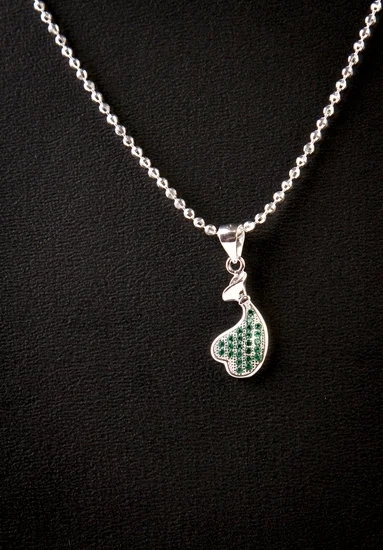A customized jewelry box holds more than just trinkets and treasures – it holds memories, sentimentality, and a piece of artistry. In this article, we will guide you through the process of creating your very own DIY jewelry box. From choosing the right materials to adding the final touches, we will help you create a one-of-a-kind piece that reflects your unique style and personality.
There is something truly special about crafting a jewelry box with your own hands. Each brushstroke, each cut of wood, and each carefully chosen detail adds a personal touch that cannot be replicated. Whether you are making it for yourself or as a gift for someone else, a handmade jewelry box carries an indescribable sentimental value. It becomes more than just a storage space for precious accessories – it becomes a cherished keepsake.
When you make your own jewelry box, you have the freedom to design it exactly how you want. You can choose the shape, size, color, and overall aesthetic based on your preferences and needs.
No two DIY jewelry boxes are alike because each one is infused with the creativity and imagination of its creator. So unleash your inner artist and get ready to embark on an exciting journey of self-expression and craftsmanship as we guide you through the process step by step.
Choosing the Right Materials for Your DIY Jewelry Box
When it comes to making a DIY jewelry box, choosing the right materials is crucial to ensure that your final product is both sturdy and visually pleasing. This section will guide you through the process of selecting the appropriate materials for your project.
Firstly, consider the type of wood you want to use for your jewelry box. Some popular options include pine, oak, and walnut. Pine is a softwood that is readily available and affordable, making it a good choice for beginners. Oak, on the other hand, is a hardwood known for its durability and elegant appearance. Walnut offers a rich and luxurious look, but it may require more advanced woodworking skills due to its hardness.
In addition to the wood, you will need essential tools and supplies such as a saw, drill, sandpaper, screws or nails, hinges, and a latch or lock mechanism. These tools can usually be found at hardware stores or online. Don’t forget about safety equipment like goggles and gloves to protect yourself during the construction process.
Lastly, finding affordable materials can help you stay within budget without compromising quality. Consider visiting local thrift stores or salvage yards to find unique pieces of wood that can be repurposed for your jewelry box. Online marketplaces also offer a wide range of affordable materials.
By carefully selecting the right materials for your DIY jewelry box, you can create a beautiful and functional piece that meets your specific needs while showcasing your creativity and craftsmanship.
| Type of Wood | Advantages |
|---|---|
| Pine | – Readily available
|
| Oak | – Durable
|
| Walnut | – Rich and luxurious look
|
Designing Your Jewelry Box
When it comes to creating a DIY jewelry box, designing the perfect layout is crucial. Taking the time to sketch and plan out your design will help ensure that your jewelry box is both functional and aesthetically pleasing. Here are some key considerations and tips to keep in mind during the designing process.
Firstly, it’s important to plan out the dimensions and compartments of your jewelry box. Consider the types of jewelry you own and how you want them organized. Do you need larger compartments for chunky necklaces or smaller ones for delicate earrings? Making a list of the various types of compartments you require will help guide your design process.
Additionally, think about the overall aesthetic of your jewelry box. Do you prefer a minimalist design or something more ornate? Consider factors such as color schemes, patterns, and any decorative elements you may want to incorporate into your design.
Once you have a clear idea of what you want your jewelry box to look like, create a rough sketch or blueprint. This will serve as a visual guide throughout the construction process. Make sure to label each section and compartment accordingly so that you can easily refer back to your plans when building.
To assist with visualizing your design, consider using online resources or software to create a digital mock-up of your jewelry box. This can give you a clearer idea of how everything will fit together before committing to cutting and assembling the materials.
Remember, planning ahead will save you time and prevent mistakes down the line. Carefully considering functionality and aesthetics during the designing phase will result in a jewelry box that meets both your practical needs and personal style preferences.
Tips for Creating a User-Friendly Layout
- Consider accessibility: Ensure that each compartment is easily accessible without interfering with other pieces.
- Provide padding: Incorporate soft lining materials such as velvet or felt to protect delicate pieces from scratches or damage.
- Optimize space: Maximize the use of space by utilizing adjustable dividers or removable trays to accommodate different sizes of jewelry.
- Think about future expansion: If you anticipate your jewelry collection growing, leave room for additional compartments or consider designing your box in a modular fashion to easily add on sections later.
By investing time in the planning and designing stage, you’ll be able to create a jewelry box that not only showcases your creativity but also serves as a practical storage solution for your precious pieces. So grab your sketchpad and let your imagination run wild as you design the perfect DIY jewelry box.
Step-by-Step Guide
Building the main structure of a DIY jewelry box is an essential step in creating a functional and durable piece. Follow this step-by-step guide to ensure that your jewelry box has a strong foundation:
- Measure and cut the wood pieces: Start by measuring and marking the dimensions of each wood piece for the base, sides, and lid of the jewelry box. Use a saw or a table saw to carefully cut along these measurements. Remember to measure twice and cut once to ensure accuracy.
- Assemble the base and sides of the box: Begin by attaching the sides of the box to the base using wood glue or screws. Make sure that the corners are square by using a carpenter’s square or a right angle tool. Apply clamps to hold everything in place as you work.
- Create a secure and durable structure: To reinforce the joints, use wood glue along with screws or nails. This will help create a sturdy structure that can withstand regular use. You can countersink screws or nails slightly below the surface of the wood and fill them with wood filler for a seamless appearance.
Throughout this process, it is important to take your time, work carefully, and double-check your measurements before cutting or assembling any pieces.
Once you have built the main structure of your jewelry box, you can move on to adding dividers and compartments to organize your jewelry collection effectively.
Adding Dividers and Compartments to your Jewelry Box
When designing and building your own DIY jewelry box, adding dividers and compartments is a crucial step to ensure that your precious pieces stay organized and protected. Dividers help to separate different types of jewelry, such as necklaces, earrings, rings, and bracelets, making it easier to find what you’re looking for without tangling or damaging the items. In this section, we will discuss the process of adding dividers and compartments to your jewelry box.
The first step in this process is determining the number and size of compartments needed for your jewelry collection. Take into consideration the different sizes and shapes of your jewelry pieces, as well as any special storage requirements they may have. For example, delicate necklaces may need longer compartments or hooks to prevent tangling. Earrings can be stored in small divided sections or specially designed earring holders. Rings may require individual slots or cushions to keep them secure.
Once you have determined the compartments needed, you can start installing the dividers into your jewelry box. There are several techniques you can use depending on the materials you are working with. For wooden boxes, one method is to cut grooves into the sides or bottom of the box where you want to place dividers.
The grooves should be just wide enough and deep enough to hold each divider securely in place. Another technique is using removable acrylic dividers that can be placed wherever needed within the box.
It is important to choose appropriate materials for your dividers based on their purpose and aesthetic appeal. Felt or velvet fabric can be used as lining material for dividers, providing cushioning and protection for delicate jewelry pieces. Wood or acrylic sheets can also make sturdy dividers that offer a more visually appealing look.
By adding dividers and compartments to your DIY jewelry box, you will be able to efficiently store and organize your collection while keeping each piece safe from damage. With careful planning, thoughtful design choices, and suitable materials, your jewelry box will be not only functional but also aesthetically pleasing. In the next section, we will discuss how to personalize your DIY jewelry box by adding decorative elements that reflect your personal style and taste.
Personalizing Your DIY Jewelry Box
Adding decorative elements to your DIY jewelry box is a fun and creative way to make it truly unique and reflect your personal style. Whether you prefer a minimalist look or something more elaborate, there are various techniques you can use to customize your jewelry box.
Painting or Staining the Box for a Polished Finish
One of the easiest ways to personalize your jewelry box is by painting or staining it. Before starting, make sure to sand the surface of the wood to ensure smooth application. Choose a paint color that complements your room’s decor or opt for a stain that enhances the natural beauty of the wood. You can apply multiple coats for a deeper hue. Allow each coat to dry completely before adding another layer.
Applying Decorative Moldings or Trim
To elevate the look of your jewelry box, consider adding decorative moldings or trim. These embellishments can be found at most home improvement stores or craft stores. Measure the dimensions of your box and cut the moldings accordingly using a miter saw. Attach them securely using wood glue and finish nails. This simple addition can give your jewelry box an elegant and sophisticated touch.
Using Stencils or Decals for a Unique Touch
If you want to add patterns or designs to your jewelry box without much effort, stencils or decals are excellent options. You can find various stencil designs at craft stores, and they come in different shapes, sizes, and themes. Secure the stencil onto the surface of your jewelry box using tape, then apply paint over it using a stencil brush or sponge. Allow it to dry completely before removing the stencil.
Alternatively, if you prefer decals, choose ones that suit your taste from online retailers or specialty stores. Clean the surface of your jewelry box thoroughly before applying them directly onto it. Smooth out any air bubbles with a credit card or similar tool. This method allows you to add intricate designs or even personalize your box with initials or names.
Remember, the goal is to make your DIY jewelry box reflect your personality and style. Don’t be afraid to experiment with different techniques or combine multiple decorative elements to create a one-of-a-kind piece that you’ll cherish for years to come.
Making Your Jewelry Box Functional
There are many ways to make your DIY jewelry box not only beautiful but also functional. In this section, we will explore different techniques and ideas for adding hooks, pouches, and mirrors to your jewelry box.
Installing Hooks for Necklaces and Bracelets
One of the key elements of a functional jewelry box is having a designated space for necklaces and bracelets. By installing hooks inside the box, you can ensure that these pieces stay tangle-free and easily accessible. When choosing hooks, consider their size and shape to accommodate different types of necklaces and bracelets.
To install the hooks, determine where you want them to be placed inside the box. Measure the distance between each hook to ensure equal spacing. Use a drill or screwdriver to secure the hooks to the interior walls of the box. Make sure they are firmly attached so they can support the weight of your jewelry.
Sewing Pouches for Rings and Earrings
Rings and earrings are smaller pieces that can easily get lost or tangled if not properly organized. Adding small fabric pouches to your jewelry box is an excellent way to keep these items safe and organized.
To create pouches, choose a soft fabric such as velvet or satin in a color that complements your overall design. Cut out rectangular pieces of fabric (preferably double-layered) according to the desired size of the pouches. Sew three sides of each rectangle together, leaving one side open for easy access.
Once you have sewn all the pouches, attach them securely inside the jewelry box using glue suitable for fabrics or by stitching them directly onto the inner walls. Ensure that there is enough space between each pouch for easy retrieval of rings and earrings.
Incorporating a Small Mirror for Convenience
Having a mirror inside your jewelry box adds both functionality and convenience. It allows you to try on different pieces of jewelry and see how they look without having to move to another location.
To incorporate a mirror, choose a small-sized mirror that fits well inside your box. It can be square, rectangular, or even circular depending on the style you prefer. Attach the mirror to the inner lid of the box using strong adhesive or by mounting it with screws.
By adding hooks for necklaces and bracelets, sewing pouches for rings and earrings, and incorporating a small mirror, you can turn your DIY jewelry box into a functional storage solution that meets all your needs. These additions not only enhance the usability of the box but also add a touch of convenience and luxury to your jewelry organization experience.
Final Touches and Care
After completing the construction of your DIY jewelry box, it is important to give it those final touches that will not only enhance its appearance but also ensure its longevity. This section will guide you through the process of finishing the jewelry box and provide tips for preserving its quality over time.
The first step in finishing your jewelry box is to apply a protective finish. This will help prevent damage from moisture, scratches, and other forms of wear. There are various options for finishes, such as polyurethane, lacquer, or wax.
Before applying any finish, make sure to sand the entire surface of the box to create a smooth and even texture. Then, follow the instructions on the finish product for application. It is recommended to apply multiple thin coats rather than one thick coat for better results.
Once you have finished applying the protective finish, it is important to clean and maintain your jewelry box regularly. Use a soft cloth or brush to remove dust and debris from both the exterior and interior surfaces of the box. Avoid using harsh chemicals or abrasive cleaners as they can damage the finish or delicate jewelry pieces stored inside. Additionally, keep your jewelry box away from direct sunlight or extreme temperatures which can cause warping or fading.
Finally, proudly display and enjoy your handmade creation. Find a special place in your home where your jewelry box can be showcased and easily accessed. Consider using decorative elements such as silk lining, velvet padding, or even small LED lights to enhance its appeal and make it truly unique.
Conclusion
In conclusion, the process of making your own DIY jewelry box can bring immense joy and satisfaction. By crafting a personalized jewelry box, you not only create a practical storage solution for your precious pieces but also imbibe it with sentimental value and pride. Throughout this article, we have discussed the importance of a customized jewelry box and provided step-by-step guidance on how to create one.
Creating your own DIY jewelry box allows you to design a unique piece that truly reflects your personal style and preferences. From choosing the right materials to adding decorative elements, every step in the process gives you the opportunity to unleash your creativity. The finished jewelry box becomes more than just a storage container; it becomes a work of art that showcases your individuality.
Furthermore, making a handmade jewelry box allows you to experience the fulfillment of creating something from scratch. The sense of accomplishment that comes with measuring, cutting, assembling, and finishing each component cannot be replicated by simply purchasing a readymade product. Every time you use your customized jewelry box, you will be reminded of the time and effort you put into creating it.

Welcome to my jewelry blog! My name is Sarah and I am the owner of this blog.
I love making jewelry and sharing my creations with others.
So whether you’re someone who loves wearing jewelry yourself or simply enjoys learning about it, be sure to check out my blog for insightful posts on everything related to this exciting topic!





